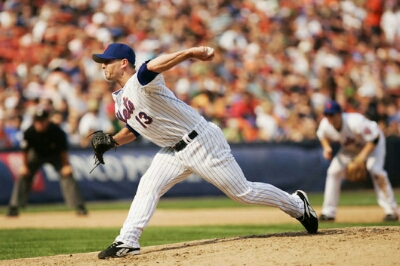There are many times I can think of when a new client comes in and is complaining of stiffness in the hips or shoulders, or their calves are tight. When I ask them what they’ve been trying to do in order to correct this issue, I usually hear something like this…
“I stretch it occasionally. You know, just try to loosen it up so it doesn’t bother me”.
After assessing and screening these individuals, I often find that they lack core/spinal stability. Tissues may be “tight”, but it’s imperative to find out WHY they’re tight to begin with.
What these poor souls don’t realize is that aside from possibly having some true tissue stiffness, they also possess a lack of core stability. What needs to be understood is that a lack of stability in the core has an impact on the other joints (hip, shoulder, neck, ankle, ect).
What happens over time is that these joints basically “pick up the slack” for the lack of core/spinal stability, and in turn the body creates an artificial stability by “locking down” the tissues at that joint. That joint becomes unable to proficiently transfer any sort of load or force back towards the core because the body realizes that the core can’t handle it. This can happen up and down the kinetic chain.
If we take a look at how each of us develops from an early age, you’ll see that we are born with mobility. It’s through exploring movement as infants, trial and error and a LOT of reppetition that we gain our stability. Gray Cook explains this very nicely in the video below. I especially like how he talks about kicking your kid so that he or she has to keep getting back up to truly gain the ability to stand and eventually, walk.
Here is an image of the progression of gross motor control. Remember the good ol’ days?
Life has a funny way of changing this. As we age, we pick up bad movement habits, we sit more and we move less. The body is incredibly good at finding alternatives and adapting when something in the chain isn’t working properly. This brings me to my next point, which is… Stretching is NOT always the answer when stiffness/tightness is present.
You can stretch and foam roll all you want, but if that joint is unstable, or there’s an unstable joint in one of your myofascial lines (Thomas Myers anyone?), your body is going to b**** slap you right back to where you were before – TIGHT, WEAK & UNSTABLE.
For example. I routinely see people with “tight shoulders” who also present very poor scapular control/stability. I have them perform exercises that focus on joint centration and stability and the tension may subside. Of course this isn’t always the case, and things aren’t typically that simple. This is why it’s imperative that we look elsewhere for issues that may be contributing to the problem. The point is that stretching should not be your go-to whenever tension is present. Investigate, assess and correct.
Kettlebell training can be especially beneficial if executed correctly for shoulder stability. The turkish get-up is one of my absolute favorite exercises for this. Of course, whether or not they are safe for you or a client is subjective, but when learned correctly they are an invaluable tool for shoulder health and performance. Bottoms-up kettlebell variations are also a simpler alternative for working shoulder stability.
Turkish Get-Up:
Bottoms-up Kettlebell Carry: Eric Cressey
“Failure of the rotator cuff and the scapular stabilizers to maintain the humeral head in the glenoid fossa can lead to excessive humeral head migration and either increased tensile stress on the tendons 10, 15 or compression of the tendons from abutment of the humeral head on the undersurface of the acromian.” (1)
Eric Cressey on anterior humeral glide in a common rowing motion:
So, to quickly recap:
- If your core is weak/unstable, surrounding joints/tissues can & will pick up the slack and create tension at those joints/tissues
- Unstable joints are sloppy joints. They under perform and can often cause discomfort or pain for the individual depending on the severity
- Working on joint centration and stressing osteokinematics as well as arthrokinematics is vital to your joint health & overall performance
Osteokinematics:
- Gross movements of bones at joints
- Flexion / extension
- Abduction / adduction
- Internal rotation / external rotation
Arthrokinematics:
- Small amplitude motions of bones at joint surface
- Roll
- Glide (or slide)
- Spin
References:
(1) Tovin BJ. Prevention and Treatment of Swimmer’s Shoulder. N Am J Sports Phys Ther. 2006;1(4):166-75.
Pick up something heavy.





